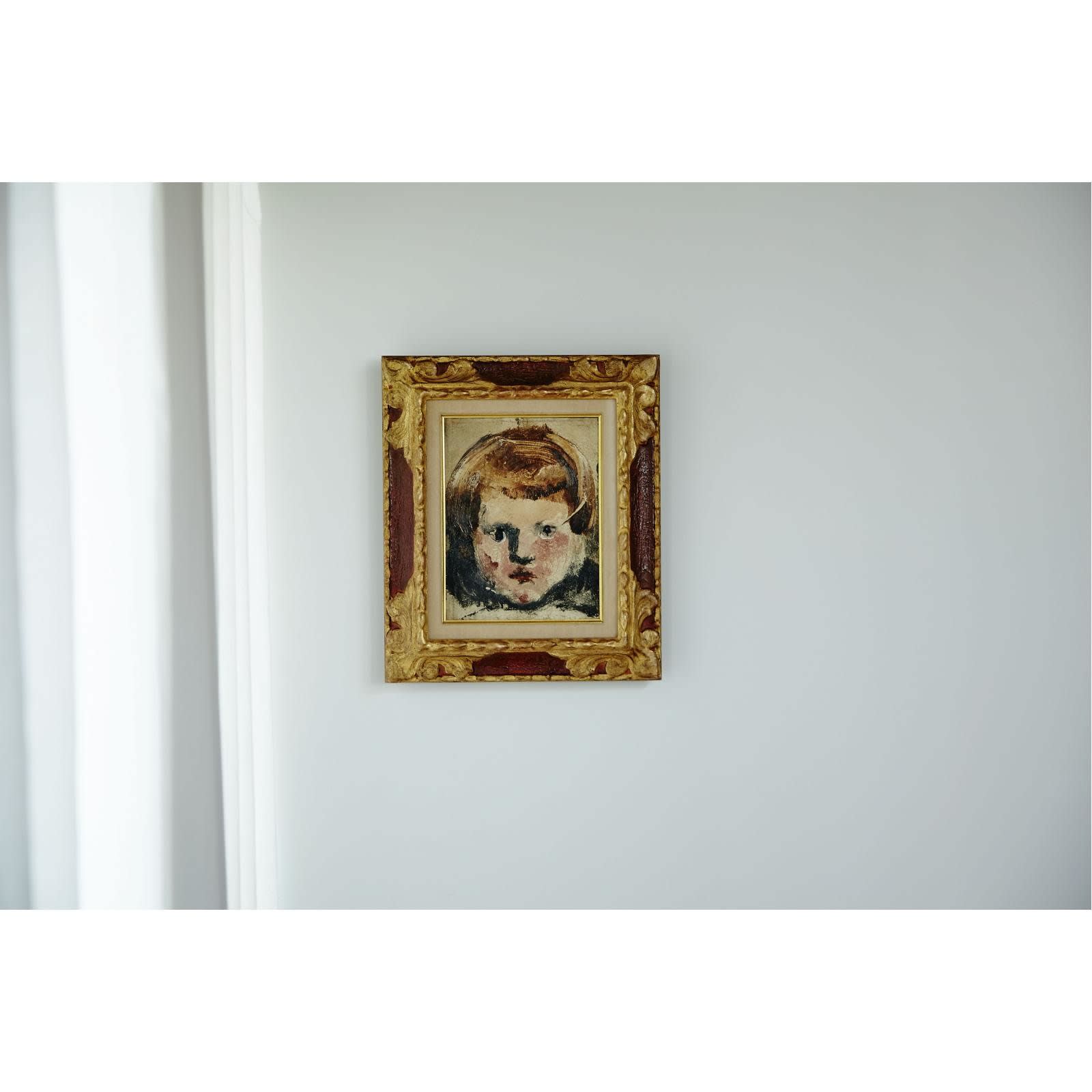Saeki Yūzō (1898–1928)
Young Jacques Bonaventure
Oil on canvas, framed (3P)
With a Tokyo Art Club certificate
26 x 20 cm
41 x 35 cm (overall)
With a Tokyo Art Club certificate
26 x 20 cm
41 x 35 cm (overall)
Literature
Geijutsu Shincho no. 281. Tokyo: Shinchosha, 1973.Saeki Yuzo zengashu. Tokyo: Asahi Shinbunsha, 1979.
This work first came into view in 1973,nearly half a century after Saeki Yuzo’s death. In the May issue of 1973, the art journal Geijutsu shincho published the painting with an article on the story of the work. It is said that a lady called Mrs. Bonaventure brought three works by Saeki into a gallery in Paris. These included an oil painting titled Street View in Paris, the present work titled Young Jacques Bonaventure, and the dessin study of Young Jacques Bonaventure. According to this article, the father of Mrs. Bonaventure was close to Saeki’s elder brother Yusho , and thus was gifted the three works by Yuzo. The 1979 published Saeki Yuzo Zengashu (Complete works of Saeki Yuzo) dates the present work to around 1925. In the above Geijutsu shincho article, Asahi Akira wrote that although Yusho visited France towards the end of Yuzo’s first stay there till 1925, considering the mature style demonstrated in the work Street View in Paris, as well as the dating of 1927 on the dessin study, the present work is mostly likely to be painted between the autumn of 1927 and August, 1928, during Saeki’s second visit to France.
Saeki first applied light beige to represent the young boy’s skin, and on it he masterly multi-layered different shades of beige to depict the cheek, lips and hair. In contrast to this soft tone, the boy’s nasal bridge is painted dark black, as if to match with his intent gaze at the viewer. For Saeki, painting street views in Paris was a true struggle that he threw himself into at the cost of his life. Whereas communicating and portraying human beings must have been a valued break away from the struggle for him, as the anecdote of Saeki being overjoyed with his model agreeing to pose for his now renowned painting Postman (Osaka City Museum of Modern Art) reveals. Enclosing the memorable communications between the artist and the young boy and his family, this painting reveals another notable aspect of Saeki as an artist.
Saeki Yuzo (yoga painter; 1898−1928)
Osaka-born yoga painter. First learned painting at Akamatsu Rinsaku’s private school of painting since high school. Graduated from Western-style painting department at Tokyo School of Fine Arts. Traveled to France, visited Maurice de Vlaminck together with Satomi Katzuo and received great influence from Vlaminck. Founded 1930 Kyokai (1930 Association) with Satomi, Maeda Kanji and others. Works produced in Europe and the Shimo’ochiai landscape series composed at his atelier were highly praised. Later traveled to France again, produced masterpieces such as Postman, and died of tuberculous and nervous breakdown in France.
Saeki first applied light beige to represent the young boy’s skin, and on it he masterly multi-layered different shades of beige to depict the cheek, lips and hair. In contrast to this soft tone, the boy’s nasal bridge is painted dark black, as if to match with his intent gaze at the viewer. For Saeki, painting street views in Paris was a true struggle that he threw himself into at the cost of his life. Whereas communicating and portraying human beings must have been a valued break away from the struggle for him, as the anecdote of Saeki being overjoyed with his model agreeing to pose for his now renowned painting Postman (Osaka City Museum of Modern Art) reveals. Enclosing the memorable communications between the artist and the young boy and his family, this painting reveals another notable aspect of Saeki as an artist.
Saeki Yuzo (yoga painter; 1898−1928)
Osaka-born yoga painter. First learned painting at Akamatsu Rinsaku’s private school of painting since high school. Graduated from Western-style painting department at Tokyo School of Fine Arts. Traveled to France, visited Maurice de Vlaminck together with Satomi Katzuo and received great influence from Vlaminck. Founded 1930 Kyokai (1930 Association) with Satomi, Maeda Kanji and others. Works produced in Europe and the Shimo’ochiai landscape series composed at his atelier were highly praised. Later traveled to France again, produced masterpieces such as Postman, and died of tuberculous and nervous breakdown in France.



